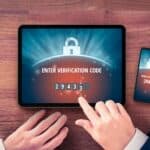In today’s digital age, safeguarding your online accounts is more crucial than ever. One of the most effective ways to enhance your security is through Multi-Factor Authentication (MFA). Here’s a brief overview of what MFA is, how it works, and why it’s essential.
What is Multi-Factor Authentication?
Multi-Factor Authentication (MFA) is a security system that requires multiple methods of verification to confirm a user’s identity. Instead of relying solely on a password, MFA combines two or more independent credentials from these categories:
- Something You Know: A password or PIN.
- Something You Have: A smartphone, security token, or smart card.
- Something You Are: Biometric data such as fingerprints or facial recognition.
How Does MFA Work?
When you log into an account with MFA enabled, you’ll go through several steps:
- Enter Username and Password: This is the first layer of security.
- Second Verification Step: You’ll be prompted to provide a second factor, such as a code sent to your phone or a fingerprint scan.
For instance, after entering your password, you might receive a one-time code via SMS or use an authenticator app to generate a time-sensitive code. Only after providing this second piece of information will you be granted access.
Why is MFA Essential?
- Enhanced Security: Even if your password is compromised, an attacker would still need your second verification method, significantly reducing the risk of unauthorized access.
- Protection Against Phishing: MFA can thwart phishing attempts. Even if an attacker tricks you into revealing your password, they still can’t access your account without the second factor.
- Compliance and Best Practices: Many industries require MFA to comply with regulations and security standards, making it a critical component of business security practices.
- Peace of Mind: Knowing that your accounts have an added layer of protection can provide peace of mind, especially for sensitive information like banking or personal data.
Implementing MFA
Most major services offer MFA, including Google, Microsoft, and social media platforms like Facebook and Twitter. Enabling MFA is usually found in the security settings of your account. It’s a simple process that greatly enhances your security.
In conclusion, Multi-Factor Authentication is a straightforward and highly effective way to protect your online accounts. By requiring multiple forms of verification, it adds an essential layer of security that passwords alone can’t provide. Take the time to enable MFA on your accounts and enjoy the peace of mind that comes with knowing your data is more secure.


